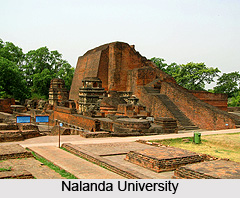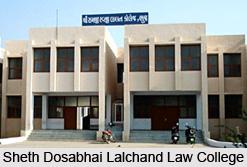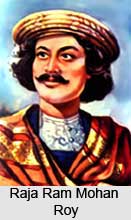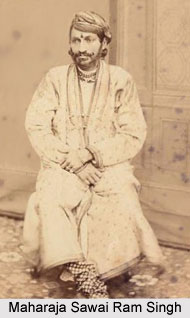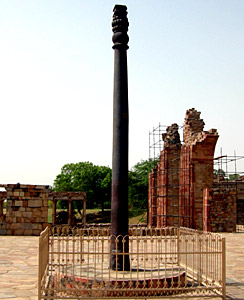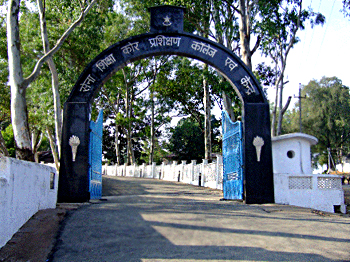Fashion Careers in India depicts the growing importance of fashion in India; the progress of the concept of culture of multiculturalism and of global style in the Indian subcontinent. The fashion industry worldwide is one of the most glamorous, having its reach from New York to London to Paris and Tokyo.
All over the globe the latest trends travel so fast that designers are busy making forecasts for each and every season and occasion they can think of. India, which has always been a centre for the textile and garment trade, is also growing into a centre of innovation in garment and accessory design.
The economic potential is so huge that designers and apparel houses worldwide are trying to streamline their operations to reach the maximum consumers with the latest products at the best possible prices. But of course, to satisfy everyone`s tastes is just not possible. In order to reach the right audience, apparel houses have created different brands for different segments. Apart from foreign countries, even India has major players like Weekender, Tamarind, Peter England, Pantaloons and a host of others.
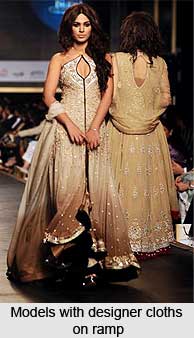 In the last decade, fashion in India is slowly coming of age. Training institutes that teach novices the basics of design and fashion are proving to be a hothouse of talent. Although, one must be wary of spurious institutes that are mushrooming all over trying to lure unsuspecting students with the glamour and hype that surrounds fashion. The fashion industry too has developed over time with functions becoming more specialized and distinct. Training, qualifications and experience in the field are of prime importance if one is looking for a job in this dynamic field.
In the last decade, fashion in India is slowly coming of age. Training institutes that teach novices the basics of design and fashion are proving to be a hothouse of talent. Although, one must be wary of spurious institutes that are mushrooming all over trying to lure unsuspecting students with the glamour and hype that surrounds fashion. The fashion industry too has developed over time with functions becoming more specialized and distinct. Training, qualifications and experience in the field are of prime importance if one is looking for a job in this dynamic field.
Fashion has a wide scope for choosing a career. Fashion design as a career combines colour, shade and tone of textiles, fabrics and ornamentation. It involves areas like creative design and drawing, pattern making, sewing and embroidery, garment-manufacturing technology, apparel construction methods, textile science, fabric dyeing and printing and computer-aided design. Now the fashion industry has become so specialized that it encompasses a vast field of studies in design concept, fashion design production management, quality control, planning, fabric design, printing, fashion merchandising, textile science, colour mixing, marketing and so on.
The primary areas of work in the fashion industry are market research, designing and manufacturing of garments and textiles. Fashion design career is the most important area of work in fashion industry. Designing involves creating original designs after studying the changing trends of the market i.e. market research. It has various fields of specialization like garments, footwear, jewellery and even shoes.
It is a challenging field as it requires the coordination of various crafts of fashion, though in small firms it is usually a one-man show but in big organizations the jobs are specialized and allotted to different people. There is scope for a lot of careers within the fashion industry itself and with the right requisites one should find no problem establishing himself/herself in the field. Apart from being a fashion designer, one can even opt for the various career paths as given below:
Merchandiser
There is vast scope for fashion merchandising in the local and export market. It involves working for retail and wholesale organizations in buying, merchandising, sales, store operations, management, distribution, merchandise planning and sales support. One needs to have a good background in textiles and possess effective communication skills. Of late, merchandisers are also conducting the market research within the fashion industry. Most merchandisers require travelling extensively throughout the country and abroad. There are no fixed timings and merchandisers often work late into the evenings. This job requires a person to be on the job, on the spot to crack the right deals. It involves a lot of determination, patience and an eye for detail.
Fashion coordinators arrange and supervise the marketing of fashion clothing for manufacturing houses, textile firms and retail stores. It is a highly competitive job involving a variety of functions. They advice on latest fashion trends, organize fashion shows, assist in advertising i.e. promoting sales and liaison with fabric dealers to ensure that the fabric, buttons and colours are of the correct shade, quality and design. Coordinates may be required to travel widely to get an idea of the fashion trends.
Illustrator
An Illustrator draws free hand sketches of designer`s ideas. He not only needs outstanding sketching skills but at the same time require excellent communication skills. Illustrator at times has to discuss with customers when new collection is introduced and this requires ability to interact. He/she is a much sought-after person by big garment houses and organizations.
Fashion Consultant
A fashion consultant must be aware of the trends and transitions in the fashion market along with knowledge about fashion designing. He is expected to offer ideas regularly on how to further develop a product to be readily absorbed in a market. He/she should be a sharp observer sensitive to changing trends.
Cutting Assistant
He has to cut samples according to specifications of the designer. A cutting assistant cuts samples, makes and alters patterns to see that the design visualized can be converted to a real dress.
Sketching Assistant
A sketching assistant makes the technical sketches of the garments and makes drawings for presentation. It is from these specification sketches, that one decides how a garment has to be fabricated. The sketching assistant sometimes has to the select the fabric also.
Fashion Stylist
A fashion stylist has to coordinate the entire wardrobe for a fashion show or programme to promote the sales of the products. It involves coordinating the dress, accessories; make up, hairstyle, even the colour of the nail polish of the model according to the theme and the overall look of the show. Sometimes a stylist is even involved in fabric selection. He or she has to be well versed in the trends and happenings in the industry and also have a keen sense of current fashion trends.
Colourist
He plays a vital role in the textile-printers, artist team. He is involved in block printing or machine printing. He must keep a record of colour samples and fabric pieces and have to work in a high paced environment, to meet deadlines. The colourist has to be very organized and must carefully follow precise instructions.
Textile Designer
Textile designer does the design and styling of textiles for apparel-related industries. A person should possess technical skills required to serve the textile industry in both surface and structural design. People, who specialize in this subject, work as textile or embroidery designers, as well as print, woven and embroidery stylists. They can also be involved in the sales and purchasing of fabrics and trim. Another allied field is textile technology, which lays emphasis on the analysis of fabric performance.
Pattern Maker
Pattern making introduces people to industry procedures like the development of the basic block and operation of the sewing machine. Pattern makers have to draft various components of garments and develop professional blocks to create patterns for specific design problems. It involves producing a finished garment from a working sketch and thus a course in pattern making and apparel construction is the ideal preparation for eventual ownership or management of an apparel manufacturing facility. However, good pattern makers can also wing it themselves. Those equipped with experience and skill is in great demand in export units and can easily make anything in the range of Rs. 40,000 per month.
Accessory Designer
Accessory design involves designing accessories for the complete fashion image. It would encompass the design and possibly manufacture of millinery, jewellery, handbags, shoes, belts, hosiery, hair ornaments headgear, etc.
Window Dresser
This is a concept that is catching on like wild fire in the country with haute couture outlets opening up all over. Window dressers are appointed on a contract basis at Rs 8,000 to Rs 20,000 per contract. High fashion boutiques need to change their displays at least every three weeks with the emergence of new styles and designs. Besides these boutiques, there are also other garment and apparel stores that contract window dressers during the festive season. Exhibitions and fairs also call for the expertise of these personnel who are able to make up dressing up stalls and counters depending on their experience and bargaining skills.
Quality Controller
As a quality controller one needs to have a thorough knowledge of pattern making and apparel construction, finishing treatments, textiles among other things. His function in a production unit would be to establish standards of quality for design, fabrics and manufacturing. Fresh graduates start with a salary of Rs 2,500 and can reach right to Rs 15,000 when one becomes supervisor.
Fashion Photographer
This is an extremely creative and well-paid profession. Fashion photographer needs to have a keen eye for aesthetic detail, a thorough knowledge of cameras and the technicalities involved in taking pictures, of light, distance and perspective to be successful. He/she should be inventive and able to visualize and communicate his ideas, at the same time must be sensitive to the moods of the models and interact freely with them. Fashion photography is one of the choices that photographers can diversify into. They can do freelancing and find employment with fashion houses, designers, fashion journals and newspapers.
Fashion Journalist
A fashion journalist is an overall in-charge of a fashion magazine. It is through them that the general public gets to know the latest fashion trends. He/she should have excellent taste for fashion and keep themselves abreast with latest fashion news, consumer reaction to new collections, fashion shows, current and future trends in colour, design and fabric. Today fashion journalist has a bright scope for employment, as there is a need for exclusive articles and programmes with the development of fashion industry.
